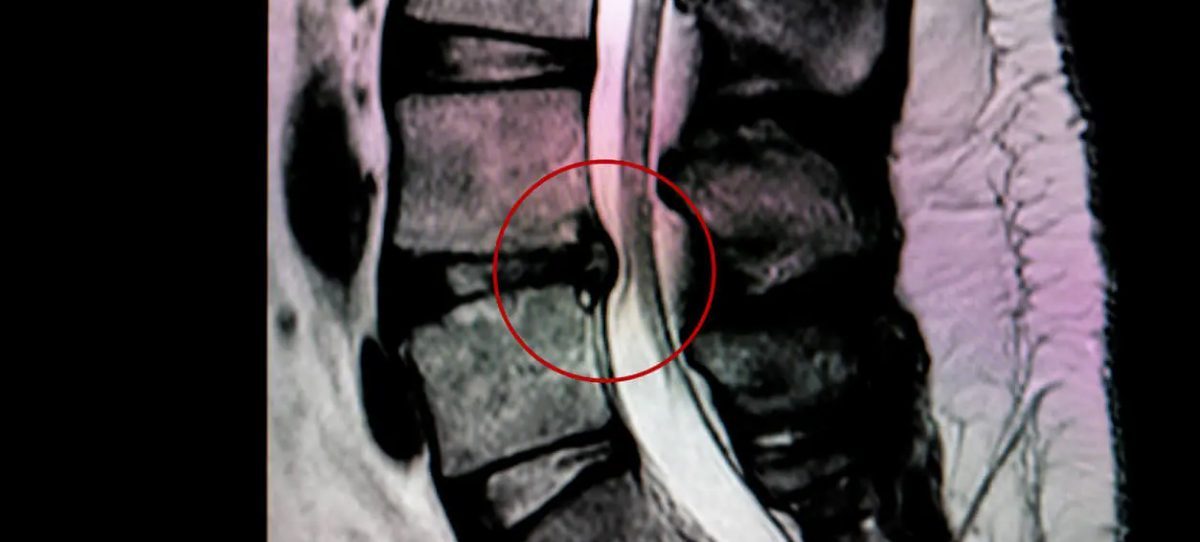Back pain is one of the most common ailments that people experience.
Among the various causes of this discomfort, a herniated disc, also known as a slipped or ruptured disc, is often the culprit.

Written by

Angel Rigueras
Pain Management Specialist
Share
Written by

Angel Rigueras
Pain Management Specialist
Follow
Table of content
Related content
Understanding the symptoms and treatment options for disc herniation can help you manage this condition effectively. In this blog, we’ll cover everything you need to know about disc herniation, including symptoms and treatments.
The human spine is an intricate structure, made up of a series of bones, known as vertebrae, stacked one on top of the other. Nestled between these vertebrae are small, spongy cushions called discs. These discs play a vital role in maintaining the spine’s flexibility and function.
Each disc is like a jelly doughnut, with a tough outer layer (the annulus fibrosus) and a soft, gel-like center (the nucleus pulposus). The outer layer provides strength and keeps the inner substance in place, while the inner gel-like substance helps the disc serve its primary purpose: to act as a shock absorber for the spinal column.
This allows you to perform a wide range of movements, including bending, twisting, and absorbing shocks without causing damage or pain to the spine.
Like any other part of the body, spinal discs are not immune to damage. They can become weak or injured, leading to a condition known as a herniated disc, or disc herniation.
In a herniated disc incident, the outer layer of the disc tears or weakens. This tear allows the inner gelatinous substance to leak out or bulge from its confined space.
Imagine squeezing a jelly doughnut – the pressure causes the jelly to protrude from the doughnut, similar to how the soft center of a disc protrudes when the disc becomes herniated.
This protrusion, or herniation, doesn’t just stay put. It extends into the spinal canal – the narrow space that houses the spinal cord and spinal nerves. When this happens, the herniated disc can press against surrounding nerves.
This pressure on the nerves can cause a range of symptoms, from mild discomfort to severe pain, depending on the size and location of the herniation.
While not everyone with a herniated disc experiences symptoms, those who do may experience the following:
In contrast, if the herniated disc is in the neck (cervical spine), the pain will typically be most intense in the shoulder and arm.
The treatment for a herniated disc or back disc hernia depends on the severity of your symptoms and whether nerve compression is present. Here are some common treatment options:
Disc herniation can cause significant discomfort, but with proper diagnosis and treatment, you can manage the symptoms and prevent them from worsening.
At University Orthopedic Care, we have a team of highly trained and experienced spine doctors, pain management specialists, and physicians on staff who are committed to providing you comprehensive care for your spine and other conditions.
If you would like to learn more about the herniated disc treatments we offer or want to schedule an appointment with us, call our friendly staff today at (866) 961-1744 or request an appointment online. We look forward to serving you!
Related content
